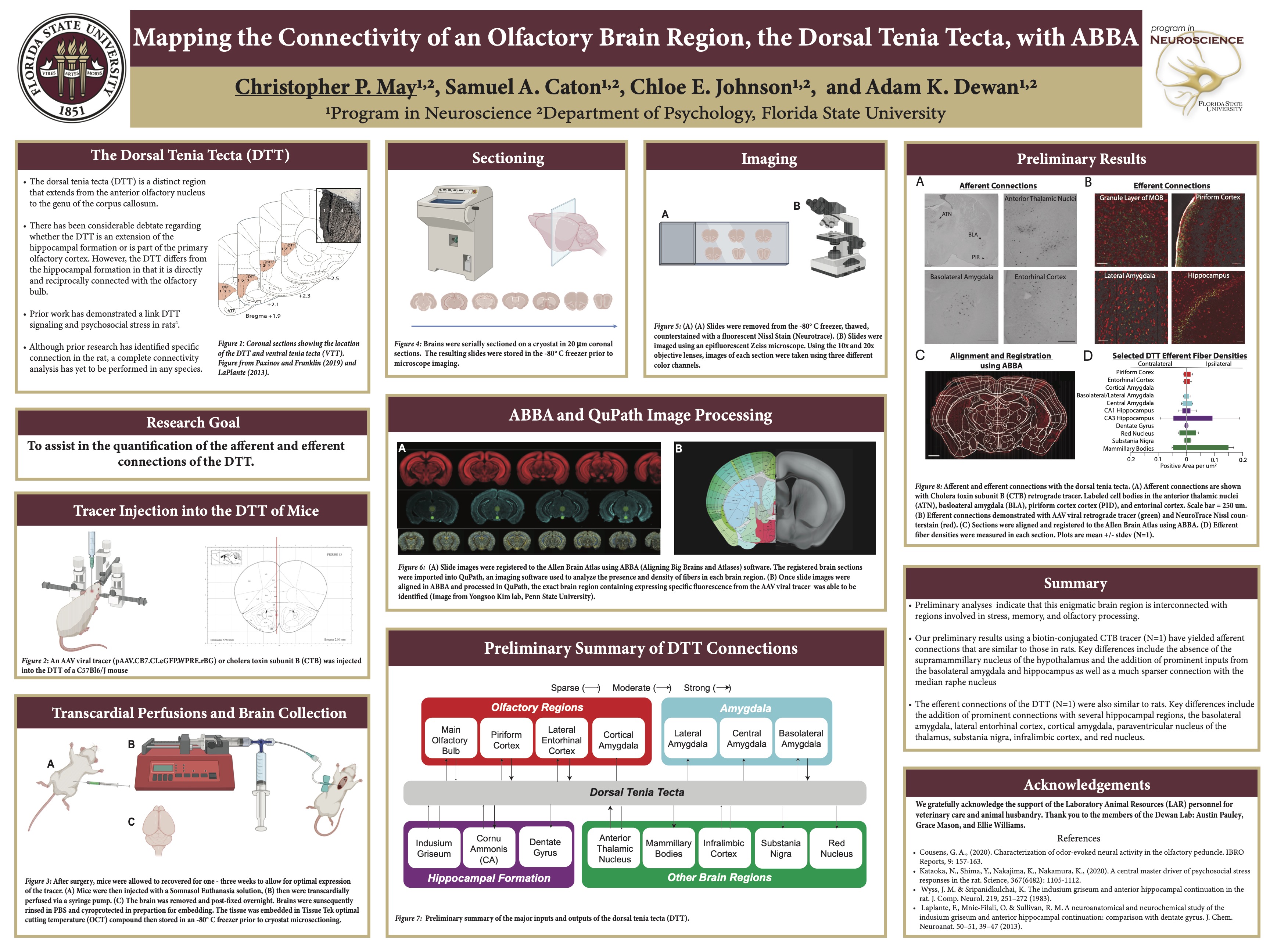Research Symposium
23rd annual Undergraduate Research Symposium, April 6, 2023
Chris May Poster Session 3: 2:45 pm - 3:45 pm/ Poster #57
BIO
Chris is a senior studying Behavioral Neuroscience from Clearwater, Florida. He is a pre-med who is involved with the Presidential Scholars program, Nu Rho Psi honor society, Garnet and Gold Key Society, and WVFS Tallahassee. Summer 2022 he participated in Boston University's School of Medicine's Summer Program in Neuroscience working as a student intern in the Neurosurgery Department and as a research assistant in Dr. Kevin Thomas's Human Neurobiology Lab. His Senior year, his focus has been on working as the Executive Director of FSU's Medical Response Unit and participating in a Directed Individual Study in Dr. Adam Dewan's olfactory lab. After graduation he will be staying in Tallahassee working at Dermatology Associates before applying to medical school.
Mapping the Connectivity of an Olfactory Brain Region, the Dorsal Tenia Tecta, with ABBA
Authors: Chris May, Dr. Adam DewanStudent Major: Behavioral Neuroscience
Mentor: Dr. Adam Dewan
Mentor's Department: Psychology Mentor's College: Arts and Sciences Co-Presenters:
Abstract
The dorsal tenia tecta (DTT) is a brain region that has reciprocal connections with the main olfactory bulb, therefore is considered part of the primary olfactory cortex. However, cytoarchitectural and connectivity analyses indicate that this region shares more similarities with the hippocampus than other primary olfactory cortical regions. The goal of this project was to provide the first connectivity analysis of this enigmatic brain region in mice. Mice were stereotaxically injected with either an anterograde or retrograde tracer into the DTT. After the incubation period, mice were transcardially perfused, the brain was removed and serially sectioned on a cryostat. The resulting slides were counterstained with a fluorescent nissl stain (Neurotrace) and imaged using an epifluorescent microscope. The resulting images were registered to the Allen Brain Atlas using ABBA (Aligning Big Brains and Atlases) software. The registered brain sections are imported into QuPath, where they were analyzed for the presence and density of fibers / cell bodies in each brain region. Our preliminary data indicate that the DTT is interconnected with regions involved in stress, memory, and olfactory processing. These experiments will eventually provide a complete anatomical map of the inputs and outputs of the murine DTT – a critical step in developing hypotheses regarding its function.
Keywords: Neuroscience, Olfaction, ABBA, Dorsal Tenia Tecta


